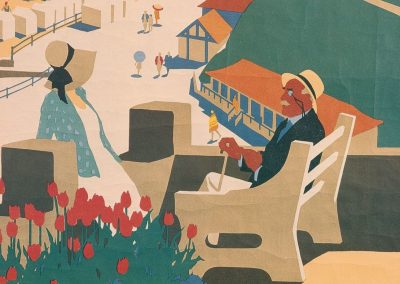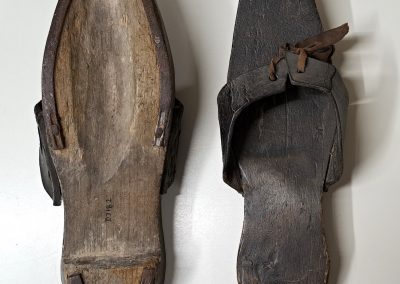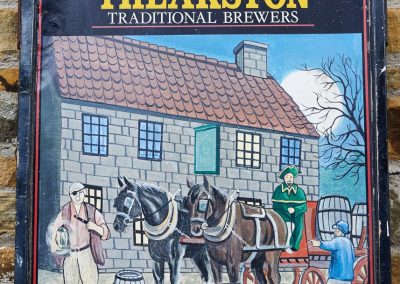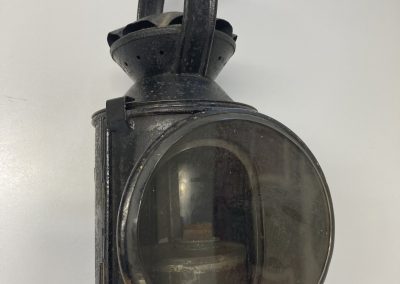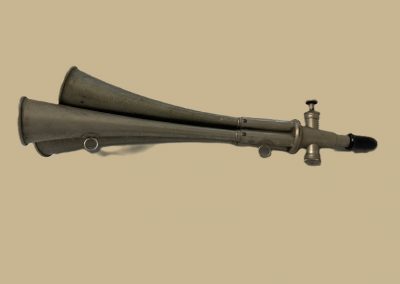Look-Out Man’s Multi-Tone Horn
North Yorkshire Moors Railway
This multi-tone horn was used on the railways by a Look-out Man working on the permanent way (the track). It probably dates from before the Second World War (1939-45) and is now in the collection of the North York Moors Railway.
The look-out man had (and still has) an important job, responsible for the safety and the lives of all the railway employees working in the track area, for example mending track. He would warn them of an approaching train.
Exploring the object
The horn has four tubes, two large, and two smaller. It also has a button to press.
The button is for changing the sound – just like the valves on a trumpet. One tone is much louder than the other. One theory as to why the Lookoutman would need to be able to change the sound of the horn is that each sound conveyed a different message, e.g.
- Danger / Train approaching
- All clear / Train has passed.
Drawbacks of the horn
The mouthpiece on a horn like this can freeze up as a result of saliva residues, rain or snow in winter, and therefore it was mandatory that the horn was tested each day before track work commenced.
On the modern railway of today, much more sophisticated warning devices are used – electronic and computer controlled. But there must always be a back-up, and today’s look-out men will still carry a more modern version of this horn in case of a failure of a piece of the modern-day warning systems.
Watch the Video – to share this object with your group and hear the sound it makes!
Watch The Video With Subtitles
Talking Points
What qualities do you think you would need to be a Look-out Man?
Would you like the job of being a Look-out Man?
What sounds do you think you would hear near the railway? What sounds would the horn have to compete with?
Why do you think the horn has a button to change the tones? What might the tones be used for? Can you think of different possible reasons?
What instrument does it remind you of?

Hands on History
You can take part in a range of activities designed for schools by the North Yorkshire Moors Railway, including a trip on the train!
Museum Location
Discover more objects linked to travel and transport





